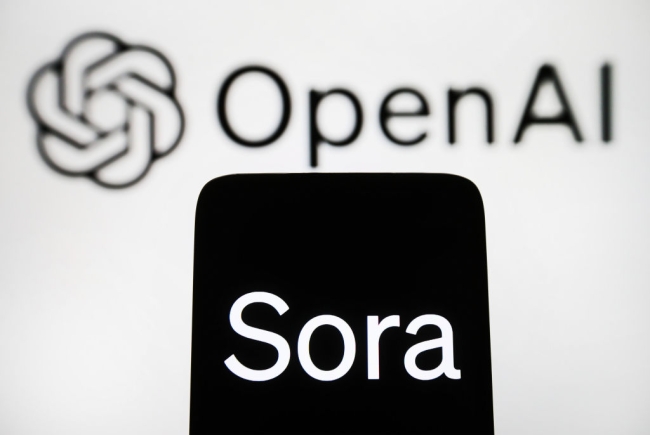You have /5 articles left.
Sign up for a free account or log in.

SOPA Images/LightRocket/Getty Images
As economists make forecasts about the impact of generative artificial intelligence on human jobs, educators worry about detecting AI-generated writing. Educators and students alike wonder: How much effort should humans exert in writing now?
More basically, I wonder if prose will continue to dominate human communication and argumentation. Lately, I’ve considered the possibility that it will not.
Social media and news outlets have been reacting to OpenAI’s announcement last month of Sora, the new generative platform that produces realistic videos from simple natural language prompts. Tell Sora, “historical footage from California during the gold rush,” for example, and you’ll be treated to a clapboard town full of horses, mules and cowboys amongst scrubby hills and a creek. It is visual magic: something from nothing but eight amazing words.
Many, amazed at how far AI has come, jump to speculate about the near-term effects. No doubt Sora and similar platforms will impact creative human jobs. New brands will dominate markets. And new creative and artistic possibilities will emerge.
But from my vantage, generative text-to-video technologies signal other essential changes ahead to human activity, especially in the realms of human thinking, learning, writing and communicating.
More than other generative platforms released to date, these new tools open paths to multimodal, nonlinear thinking and communication that humans have not fully explored. Beyond lines of text, humans now have enhanced abilities to speak in the language of images with relative ease, presenting new ways to structure communications and to understand each other. Text-to-video technologies open uncharted ways for people to generate and share images, text and sound that match their imaginations and rhetorical intentions better than with words alone, creating new possibilities for sharing ideas, analyzing data and evidence, and crafting arguments.
Beyond Sora, other generative and machine-learning AI tools are already assisting humans in their research and in their writing. Generative AI platforms draft literature reviews and produce writing in multiple styles. And that same work can now be initiated and managed through speech-to-text tools. Adding text-to-video capability with these other existing applications requires no stretch of imagination—especially as virtual and augmented reality environments have begun to show the power of three-dimensional data visualization. Humans seeking to communicate complex ideas may be drawn to machines that can help them craft a constellation of video narratives accessed through spatial—virtual reality (VR), augment reality (AR), extended reality(XR)—experiences. In time, communicating complex ideas in this way could become more common than using prose alone. After all, humans are visual animals.
This confluence of technologies will challenge human sensibilities. Writing and thinking may be mediated through images. Images are not just illustrations, but sources of information and meaning, and this new means to create video may complement, enhance and even replace written text.
Linear text will not disappear. But those who gain proficiency in video-generating technology may learn to think more deeply in new directions as they control images in ways that only gifted film directors once could. Their thoughts may be more complex than if they had relied on text alone, as they visualize metaphors and data. And as with everything with generative AI, the timelines for the impact of this technology on human thinking will likely be highly accelerated.
Now is the time to engage imaginations and experiment to find the boundaries for enhanced thinking and creativity that include, but go far beyond, text. Educators need to understand the ways these technologies exclude and include, and the ways they can be misused and misapplied. Generative AI, predictive analytics, and machine learning will not stand alone, but will integrate with other digital technologies and with approaches such as gamification, adaptive learning and collaboration. The long-term implications warrant our attention. Educators who do not begin adapting instruction and content now will be left behind.




